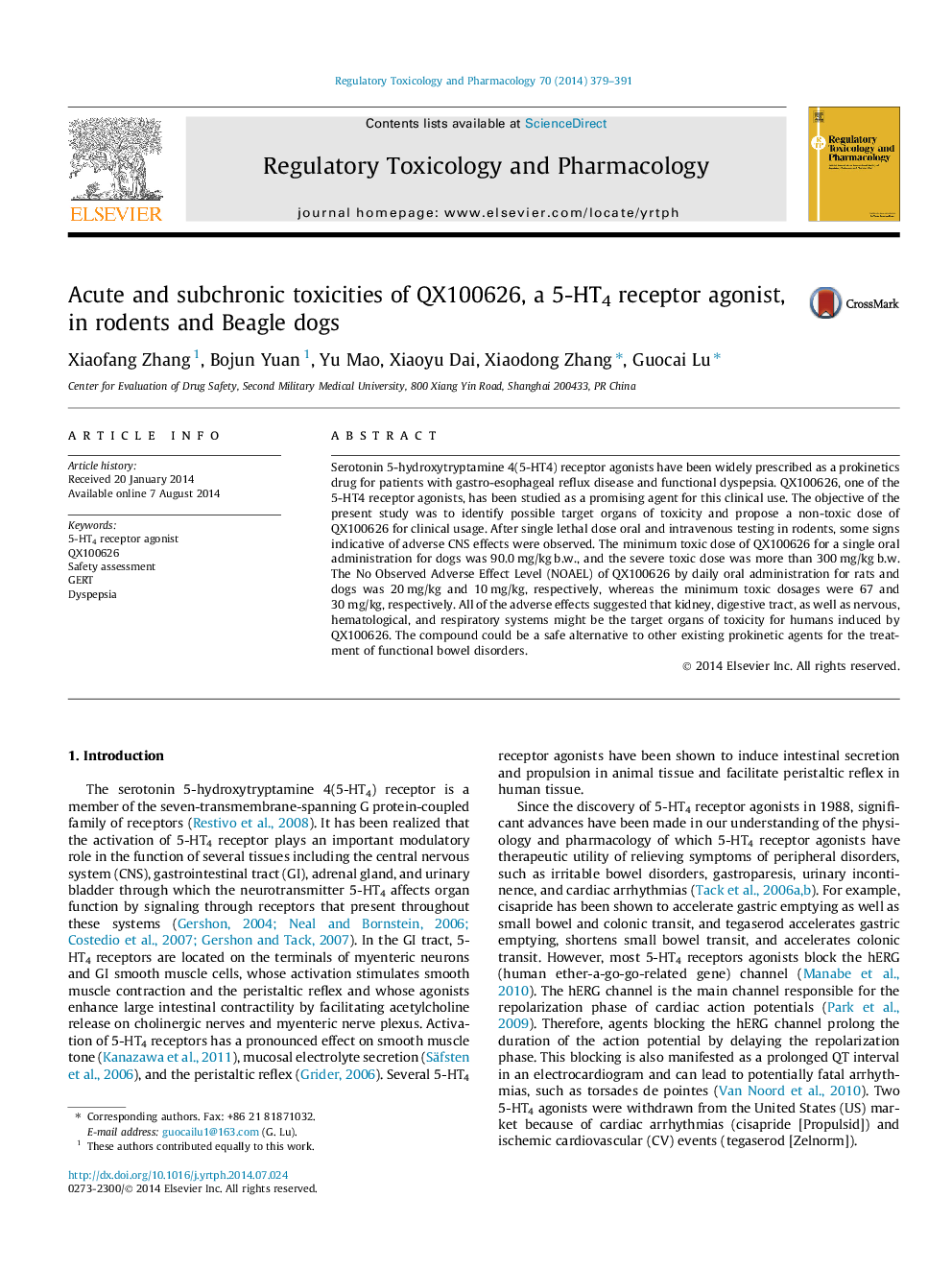| Article ID | Journal | Published Year | Pages | File Type |
|---|---|---|---|---|
| 5856923 | Regulatory Toxicology and Pharmacology | 2014 | 13 Pages |
â¢We provide preclinical toxicity of the 5-HT4 receptor agonist QX100626.â¢QX100626, has been studied as a promising agent for this clinical use.â¢Kidney, digestive tract, etc. might be targets of QX100626-induced toxicity.â¢The NOAEL of QX100626 for rats and dogs was 20 mg/kg and 10 mg/kg, respectively.â¢QX100626 may be a feasible alternative for treating functional bowel disorders.
Serotonin 5-hydroxytryptamine 4(5-HT4) receptor agonists have been widely prescribed as a prokinetics drug for patients with gastro-esophageal reflux disease and functional dyspepsia. QX100626, one of the 5-HT4 receptor agonists, has been studied as a promising agent for this clinical use. The objective of the present study was to identify possible target organs of toxicity and propose a non-toxic dose of QX100626 for clinical usage. After single lethal dose oral and intravenous testing in rodents, some signs indicative of adverse CNS effects were observed. The minimum toxic dose of QX100626 for a single oral administration for dogs was 90.0 mg/kg b.w., and the severe toxic dose was more than 300 mg/kg b.w. The No Observed Adverse Effect Level (NOAEL) of QX100626 by daily oral administration for rats and dogs was 20 mg/kg and 10 mg/kg, respectively, whereas the minimum toxic dosages were 67 and 30 mg/kg, respectively. All of the adverse effects suggested that kidney, digestive tract, as well as nervous, hematological, and respiratory systems might be the target organs of toxicity for humans induced by QX100626. The compound could be a safe alternative to other existing prokinetic agents for the treatment of functional bowel disorders.
